

Elevator Blog - Fun, quirky, interesting and informative.

When it comes to the green movement, it seems everyone has an opinion. Seemingly in play are the validity of claims, the science, who is at fault and of course funding. You probably will be grateful to know I am not going to dwell on any of that in this blog post. Instead, I am going to focus on a real solution we provide when it comes to construction projects. Specifically, how we can help to make construction more eco-friendly by providing a greener solution.
This is not going to be a screed. You can get all you want of that in other forums (there are plenty). This will be an honest look at real solutions or our deeds not words. See, there are two distinct camps when it comes to building greener. The true believers that are keenly aware of environmental issues and sincerely seek out greener alternatives. Then there is a more cynical bunch where “green” is more of a buzz word. It is viewed as an inconvenience, extra cost and larger headache that the builder is required to contend with.

Regardless of which camp you fall into, this post will show MEM as a better solution overall. Regardless of your opinion on sustainability, or the environment we at MEM are still and have always been the best the solution for any low or mid-rise building.
You can be of differing philosophies at the polar opposites of the discussion on climate or environment and still reach the conclusion that our ideas and innovation are needed. We are not necessarily concerned with how you arrived at building greener with MEM we just want to welcome you aboard.
Also, I am not going to dwell on sophistry or window dressing that you see so much of. Let’s face it, it is far too easy to wave around marketing pieces and propped up green accreditation. I grow weary of Neville Chamberlin like pronouncements of true change in our time that are worthless in real terms. Especially, when you consider nothing in the old elevator industry has changed for years. That is until the advent of the revolutionary modular elevator by MEM.
So here are a couple of real ways modular is a greener solution and why we are a better solution overall.
This is huge! Largely due to the fact that power usage for a standard 2-stop elevator with moderate use equals only $40 to $50 dollars a month or less. You can trim that consumption number a bit with LEDs and settings, but the real environmental savings comes during the installation. This is where true innovation can have an impact.
See, believe it or not the way elevators have been installed has not changed since the Civil War. Our Civil War in the US, over 160 years ago! In 1859 even prior the advent of passenger elevators a hoistway or shaft was built in the Cooper Union Foundation Building anticipating vertical transportation. In the lumbering brontosaurus that is the elevator industry that model has not changed since. That sounds crazy but its true.
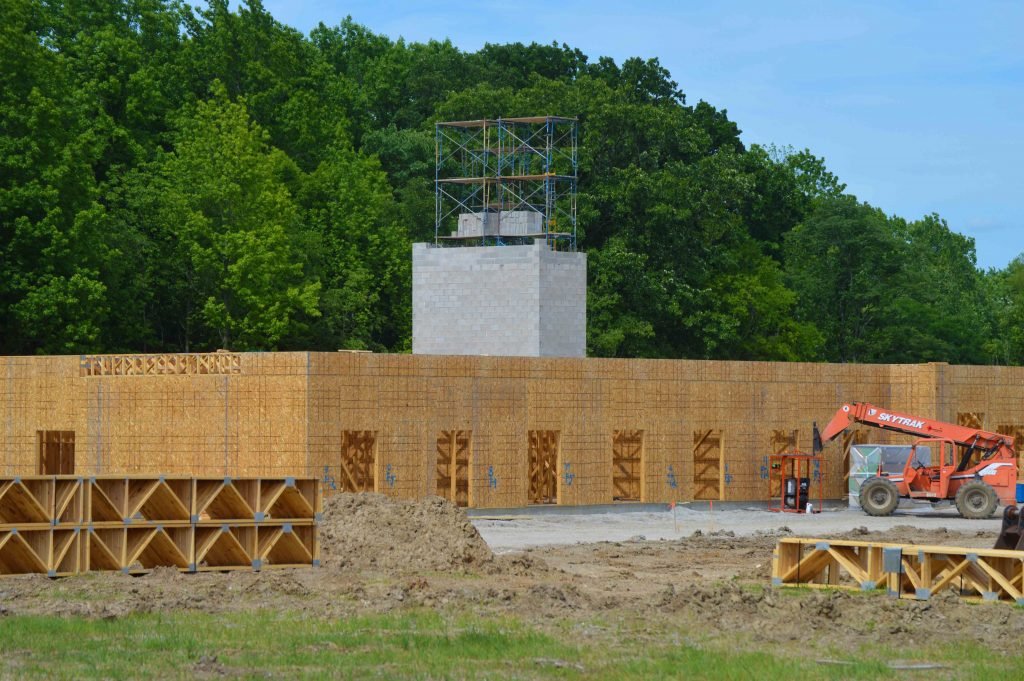
We see it when we drive by a construction site. A concrete block or cement structure is built (usually first) standing there like the obelisk to ignorance it is. This clunky, old-fashioned way of building the hoistway first is an environmental train wreck in many ways.
First, the environment suffers every time a team of bricklayers drives their diesel doolies to the construction site everyday for weeks on end erecting the scaffolding, forms and the hoistway structure. Not to mention the production of the product itself and waste involved in mixing all that cement and producing block.
Despite inroads, concrete, cement and block is the least recyclable material recycled in construction. However, our revolutionary process produces hoistways built out of steel and are therefore greener. This is because steel is the most recycled material in the world, with about 98 percent of all structural steel avoiding the landfill.
Concrete is another matter completely. According to the Cement Sustainability Initiative “Recycling concrete reduces natural resource exploitation and associated transportation costs, and reduces waste landfill. However, it has little impact on reducing greenhouse gas emissions as most emissions occur when cement is made, and cement alone cannot be recycled.” (emphasis added). In other words if recycling and reducing greenhouse gasses is the measure or your desire. Concrete gets a failing grade.
Using steel overall or recycled steel on the other hand impacts greenhouse gasses significantly. It takes 75 percent less energy to make recycled steel than steel produced from its raw material, iron ore. The green solution is a steel hoistway. If you truly want to make a difference in deeds not words, dump as much concrete and block you can out of your plans and go with steel.
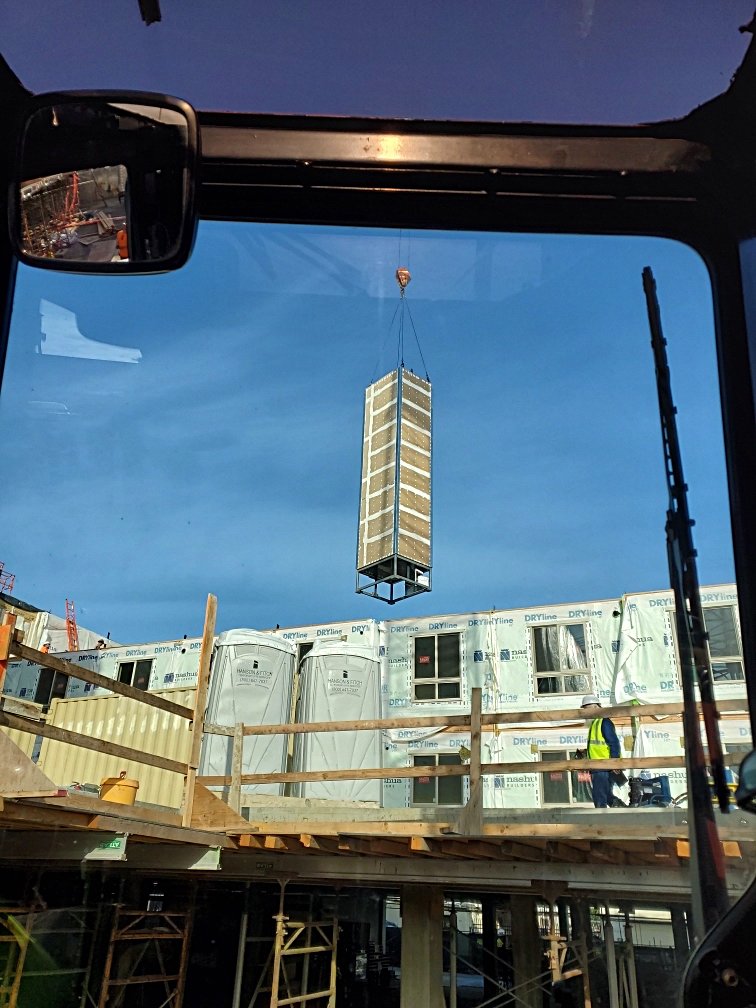
But even more impressive is the possible reuse of the structure itself. A modular elevator can literally be picked up and moved.
Although this does not happen often as the lifecycle of a modular elevator is the same or even longer than a conventional elevator. Repurposing the steel shaft is possible. Even the EPA recognizes reuse as an important component of sustainability. If you cannot use the entire structure it can be cut to length for any number or reuse projects or it can be more easily recycled.
Concrete is severely limited in reuse possibilities, recycling it has no effect on reducing greenhouse gasses and cement cannot even be recycled. To fabricate a steel hoistway it takes less energy overall and less time. It only makes sense to use a modular elevator for any low or mid-rise building.
Another twist on reuse is…pre-use. A modular elevator installs so quickly that it can be used as the construction elevator. Imagine all the carbon it takes to haul in, set up and operate a temporary elevator. MEM elevators can be used instead and then switched to permanent passenger use when ready. This makes sense whether you are looking for a green alternative or not.
We covered the hoistway regarding steel versus concrete and it is a pretty impressive win for modular, but there is more. The actual old method of installation of the elevator equipment is another black mark on the record of the out of date elevator industry. Remember that building in 1859? The Cooper Foundation? Here’s why it matters.
This may shock some of you but, everything that is in an elevator hoistway has to be installed by taking the item through the elevator doors in the building and into the shaft. Everything! Rails to cab, wiring to doors. I tell this to people outside of the construction industry and they look at me like I have three heads. It is that unbelievable. But, again if your model for efficiency is pre-Civil War what do you expect?
So with a traditional elevator a crew drives to and from the site as needed for weeks to hand carry all the bit and pieces of the elevator into the shaft. Inside they screw, cobble, bolt and coerce together all the pieces. As they come and go others come and go too. Parts, components and tools are delivered. And don’t forget lunch breaks. All this travel burns fuel by the gallons. Spewing exhaust to no end in the air.
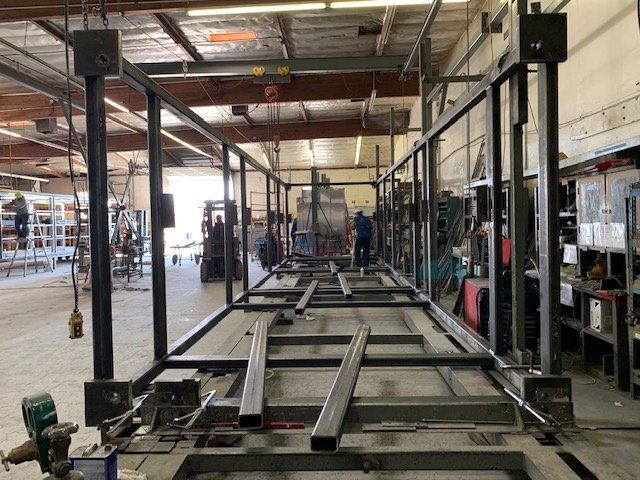
On the other hand a modular unit is completely assembled in the factory. The hoistway is manufactured and then all of the components are placed inside.
Efficiency is what we do and as a result we have a better product delivered faster that eats up less fossil fuels and produces less carbon in the process. Win for everyone. Our installation takes place at a factory with careful inspection and care. There is only one trip with a crane to the site to set the elevator in place. A process that takes four hours or less. Again modular is the greener solution.
In this post I only covered the hoistway and the installation but, there is more…much, much more. The reason is that modular elevators are factory built and have tons of opportunities to save energy, reduce waste and increase recycling.
To you cynics out there that are not believers in the green movement, remember that we revolutionize construction by moving the elevator to the front of the building process. That means your building will be completed faster. Greener for the environment whether you want it or not but greener for your pocketbook in time saved, efficiency and quality.
But the “green” doesn’t end with the hoistway and installation. Here’s a list of other benefits to modular elevators:
Why are the old elevator companies lagging so far behind the curve regarding green issues? In a nutshell, because they are not elevator manufacturers. They are elevator maintenance companies. Their goal is not to innovate or find better ways, their goal is to sell maintenance deals.
With MEM we manufacture elevators and are constantly pushing the industry in new ways by making improvements and seeking innovation. It is what we do and you can see that in our vision – MEM’s Vision: We believe in challenging the status quo…in revolutionizing the “elevator process”. We don’t just think outside the box…we think BEYOND the box.
Lastly, you have to ask yourself, “Is going green really important?” If it is then you have no real choice, modular elevators are a must for any project low or mid-rise project. If you consider yourself green, but do not at least look into MEM elevators then how committed are you really? Remember deeds not words.
For the cynics ask yourself, “For the same general investment would you be impressed with a truly green product that installs in four hours and saves you countless headaches, time and resources?” If the answer is yes (which it will be), then modular again is the best alternative.
Modular elevators are a green solution for everyone. For that reason alone is time to join the MEM revolution. Click the button below for a Fast Track quote on a project you have in mind or set up a Live Virtual Tour of our facility.
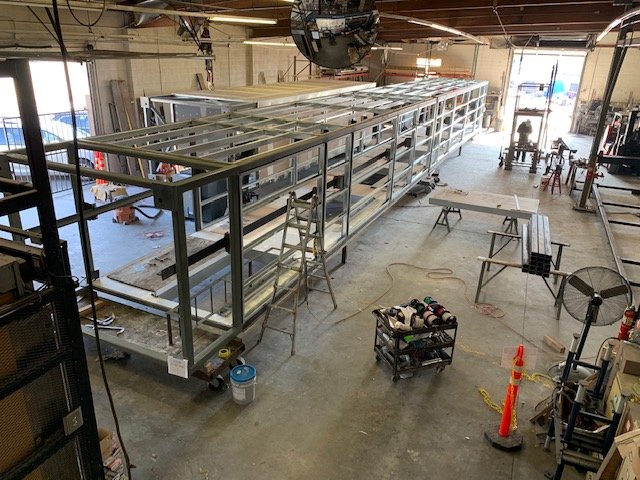
Seeing is believing. Now you can see our process first hand live. Just request a virtual tour of our production facility. When we discuss commercial quality modular elevators or write about them in blog posts, it can be hard to visualize what we are talking about. To help, you can now schedule a virtual tour of our facility and see how we are revolutionizing the elevator process.
These are one-on-one, live conversations with our national director of sales, national territory director or sales personnel. They will virtually walk you through the factory and answer any questions you may have.
To schedule your tour all you need to do is click the Fast Track button below. Then check the box for a virtual tour and fill in “required” contact information. If there is no specific project name or project city just enter “none”. We will contact you to schedule the tour at your convenience.
By opening up our process we are being transparent in what we do and how we are revolutionizing the elevator industry for the better. In that way we demonstrate how we fulfill our Vision, Mission and Core Values daily.
MEM’s Vision:
We believe in challenging the status quo…in revolutionizing the “elevator process”. We don’t just think outside the box…we think BEYOND the box.
MEM’s Mission:
To revolutionize and simplify our customer’s experiences with the elevator process. And to build the best engineered, highest quality modular elevator on the market while maintaining our values of consistency, quality and simplicity.
MEM’s Core Values: Innovation, Integrity, Quality, Consistency, Simplicity
So sign up today! Request a virtual tour by clicking the Fast Track button below and fill out the required information. See how we can produce a high-quality commercial elevator that sets in four hours and starts up in just a week. The revolution has begun.

Adaptive reuse is more than a building fad. It is a revolution who’s time has come. But, when you take vintage properties and turn them into a modern useful space (that it wasn’t necessarily built for) there are tons of hurdles. I couldn’t even start to list them all here. There are structural concerns, financing, zoning, architectural issues, city planning, community groups to assuage, materials to buy and the list goes on and on. So why not start with easy items first and draw a line through some of those to lighten the load? Modular elevators can do that as an adaptive reuse solution.

Who doesn’t love to watch buildings implode? Sometimes I will get lost in Youtube. Between seeing cats playing the piano and “incredible” dash cam videos I take in a fair share of buildings being methodically leveled. Those videos are especially cool when paired with the 1812 Overture. You know the tune (doodle-doodle-doodle-doo-dum-dum, boom – boom).
But, all that fun ultimately has a cost. When the dynamite is lit history and heritage can disappear from the face of the planet in an instant. That is truly a shame. Preservation of the past should be of the deepest concern. It helps define who we are.
On another level however, there is much bigger cost. That cost is in lost dollars and cents regarding the energy to produce the building in the first place.
See, when a building goes boom, all of the energy it took to create it goes boom too. The cost has been measured a number of ways. One of the first initiatives to estimate the true cost of bulldozing instead of reusing came in the report Assessing the Energy Conservation Benefits of Historic Preservation by the Advisory Council on Preservation (1979). It pointed out that all materials from bricks and mortar to lumber and glass contains a certain amount energy used to create, mill and mold the materials. At the time it was penned the report noted:
Once energy is embodied in a building, it cannot be recovered and used for another purpose — 8 bricks embody energy equivalent to a gallon of gasoline but cannot fuel a car.
Assessing the Energy Conservation Benefits of Historic Preservation (1979) – Page 7
That has always been true and still is true today. So, when the cannons go off in the imploding building video at the crescendo of Tchaikovsky’s grand masterpiece, millions of unrecoverable btu’s goes with it. That expended energy will forever reside in the landfill.
All that energy is not recoverable in the least. And that does not even take into account all of the energy that goes into the demolition, removal and reclamation of the site. So in a nutshell there is the premise. The energy used to create a building in the past cannot be reused, only destroyed. It is in the building itself and nonrecoverable. If the building is razed, the energy use to create the structure will forever be lost. Talk about a waste.
In other words, there is no greener building project than in a building project where the building already exists. When you accept that premise your thinking about what is greener, more sustainable and efficient changes. You begin to wonder if a modern exterior wall is more energy efficient or if it is better to use the old brick and mortar?
If the environment is truly your concern, then adaptive reuse becomes the desire instead of decimating the old and replacing. That can lead to your mind finding creative finds ways to use what has already been erected. However, for the old to be reused it must be updated.
That is where we come in. We are a real simple and green adaptive reuse solution. Most of the buildings primed to be repurposed, fit into our wheelhouse. They are low to mid-rise structures that require ADA compliance. They are perfect for our modular solution.
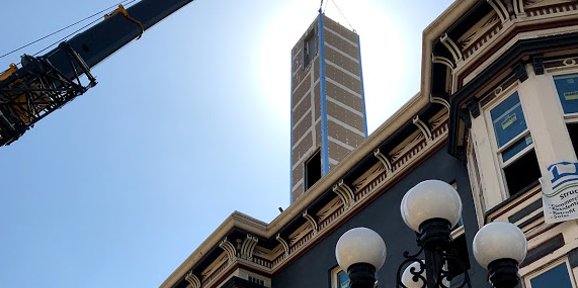

Additionally, our units can be placed on the interior or exterior of a project. That flexibility is key when dealing with existing structures. They are also most often self-supporting so they will not stress the building loads in any significant way. Lastly, they are ADA compliant and meet all codes regardless of the location. Commercial quality elevators designed to be revolutionary and solve a myriad of problems.
We do this by building an elevator hoistway or shaft out of tough 4X4 steel. Then we install industry standard, non-proprietary elevator components inside the hoistway at the factory. Everything from rails to the car are already inside. Then its loaded on a truck, delivered when you want it and sets in about 4 hours. The whole elevator is ready for start up, hoistway and all.
We also allow you to stretch your legs design-wise allowing for a glass model to show off your work on the rest of the restored building. Or we will work with your design team on something special. Just because it is modular does not mean it comes out of a cookie cutter.
But a MEM elevator is more than just the best solution for any low or mid-rise project. It is a also a greener alterative to traditional elevator companies. Here are some ways:
Adaptive reuse truly is a revolution. So, meeting the demands of that movement takes revolutionary thinking in the various products incorporated in the project.
Modular Elevator Manufacturing has been revolutionary for over 20 years finding better alternatives. So MEM is a great place to start to knock off some of the headaches and lighten your load when if comes to adaptive reuse. Think greener, smarter and faster. MEM is the best adaptive reuse solution for vertical transportation.
Finally if you want to see the doodle-doodle-doodle-doo-dum-dum, boom – boom video I was talking about click the link. If you have a project in mind that needs a low or mid-rise elevator, click the button below!
In the example in this blog post, a 5 – story dormitory project at the University of La Verne, you can see the fully installed elevator hoistway going smack-dab in the middle of the building. Not only that, if you look at the conceptual drawing you won’t see even a hint of a hoistway. The duplexed modular elevators were simply placed on the inside of the building.

I have been writing blogs forever. Not literally of course but, for a long, long time. And I have never gotten such an overwhelming response as I did writing the blog post Dirty Little Elevator Secrets. People that commented were upset with the old elevator industry and had their eyes open to the hidden agenda for the first time. They felt duped and manipulated in some cases. The result was I was asked to expand on the differences between a true manufactured elevator and what big elevator companies pass off as manufacturing.
So, that got me thinking, maybe I should expose more truths about a business that hides as best they can what they do and how they do it. And, if the audience demands it you roll out the sequel. I hope this will not be a Jaws 5 or Titanic 2 kind of effort. The goal is to be more of a Godfather-esque redux. Godfather 2 of course. Godfather 3 was a train wreck.
So, get your popcorn and super-sized drink. Here we go. Let me start by asking a simple question. When is an elevator manufacturer, not an elevator manufacturer? I know it sounds like the start of a children’s riddle, but the question is sincere.
The answer begins with telling you about what we do and who we are at Modular Elevator Manufacturing (MEM). We are a true elevator manufacturing company.
The process starts in our factory by building an elevator hoistway out of rugged steel tubing. It is engineered to be self-supporting and can meet any earthquake or hurricane standards. We then finish the shaft with mold resistant drywall inside and out. This gives it the fire protection required by the building code of the location it is going to. It also ensures the elevator can sit through the building process onsite.
The rails on which the elevator car will ride are then put placed inside. Always plumb and always level. The heavy lifting is relegated to machinery making the task easier and safer for employees. This entire time the hoistway is horizontally, whether for a low or mid-rise project. It remains that way throughout the process to assure perfect alignment and ease of inspection.
While the hoistway is being manufactured, the elevator cab is likewise being constructed. We use tough Galvanneal (stainless) steel and not flimsy wood core products that can easily mold, warp or crumble. It is built on a metal platform, with the sling. The cab is perfect in alignment, fit and finish as jigs and templates are used to assure all the manufacturing is within the strictest allowances.

The roof of the cab is completed with all the wiring and safety devises required by code. Then the interior of the cab is finished to meet the most demanding of specifications. Keep in mind that the cab is constructed on a factory floor with plenty of space to work around with easy access to every nook and cranny. The area is well lit and inspections can take place at anytime with easy access.
At the end of the two separate assembly processes, the hoistway and elevator cab are married together. The cab, platform and sling are simply inserted into the hoistway. The wiring to the hall calls is then completed. Keep in mind through the whole process inspections are done.
This is what a true manufactured elevator looks like. A hoistway with a completely finished commercial quality elevator installed inside. All that is needed is for the elevator to be set in place (a process that takes about four hours). And for it to be started up (a process that takes less than a week). The modular elevator usually goes in first in the building process and then completed when electricity is provided.

Now for what the old-fashioned, supposed elevator manufacturers do. They pull together boxes of components, parts and pieces from any number of companies and ship them to a job site. There they sit taking up space and getting in the way. Not only that, the construction team has to make space for the components as well as the mechanic’s tools and keep everything under lock and key by contract. If anything goes missing, it is not the elevator company’s fault but yours.
Finally, when the technician wants to get to your project they arrive. But don’t make the mistake in thinking they are going to start right in.
If it is a cold morning (under 55 degree in the shaft) they have to wait until it warms up. Because cold temperature can void the warranty they won’t lift a finger. The way they install the elevator requires that it is working in some fashion. Especially, in northern climates it is said that the elevator mechanic doesn’t watch the time clock, he watches the thermometer.
Then one piece at a time the maintenance person wanders back and forth from crate to shaft bringing in all the pieces, panels and paraphernalia. They then screw, cobble, coerce, bend and bolt all the parts together in the tight, cramped and poorly lit shaft. And you wonder why the elevator rattles like a teenagers jalopy when finished.
Elevator companies have little regard for the safety of workers because the technicians are required to do the lifting. Back-breaking labor is needed requiring the lugging around of heavy rails. No wonder that,
“The major causes of lost-time injuries to elevator installers and repairers were being struck by an object, overexertion (especially in lifting), falls, and being caught in/between, in that order.”
eLCOSH – Deaths and Injuries Involving Elevators
That being hit by an object is either by a piece being raised with a hoist in the tight confines of the shaft or someone dropping a part or tool.
All this is crazy. If they were truly manufactured in a factory setting it could all be avoided and the finished product would be much better.
Keep in mind that this installation and all of the pitfalls takes place last in the building process. So one misplaced bolt, one fried circuit board, one miscalculation or one injury can potentially delay the building for weeks to months. The rest of the project may be ready for occupancy, but the elevator brings everything to a halt. Also, if you raise any concerns or comments, you are viewed as the problem.
As they already have you over a barrel, more often than not you complain to co-workers or peers, but not to the elevator company. Fear of reprisals or slow-walking work looms in the back of your mind. But voicing your concerns wouldn’t matter anyway. You are stuck.
In the above scenario one company is a manufacturer…the other is not. I could be a little more forgiving if they actually manufactured all their own pieces and parts, but guess what??? Not so. They just bundle parts from a myriad of companies and ship them. They often use the very same companies we do for components. There is no real difference in the components used or the quality.
So if they in real terms are not elevator manufacturers, what exactly is their business model? How do they make money if they don’t really make the product they claim to? As a matter of fact, often times they sell their bundles of elevator components for little or no profit at all. At first blush you would say that’s crazy…until of course you look at what they do sell and how they sell it.
Otis in a recent SEC filing said, “New Equipment and Service, which, for the year ended December 31, 2019, contributed 43 percent and 57 percent of our net sales, and 20 percent and 80 percent of our total segment operating profit, respectively.” Most the money they are making regarding operating profit is in the maintenance agreement.
That is why they will sell new units for practically nothing, with proprietary parts and tools required in the product. That locks the builder, building owner or any future owner into a never ending contract. Often times the deal has clauses that guarantee annual increases and only short windows of opportunities to get out of the deal. When the jig is finally up you are locked in. And get this, even if you get out of one contract with the elevator company, you still have to have a maintenance company affiliated with the same brand. Only they have the proprietary tools for that unit.
You may be switching service providers but you will never leave the grasp of the elevator company once you ink the deal. It reminds me of the quote, “Just when I though I was out, they keep pulling me back in.” Michael Corleone – The Godfather: Part 3.
The character of Michael Corleone was in too deep and his choices were limited by his circumstances and very early choices made by his role. Ultimately, he is a truly tragic cinematic figure. Don’t be him. Don’t get in bed with a manufacturer who is not really a manufacturer and then realize it is too late regarding quality, building delays and unfair maintenance contracts.
They may have an offer you feel you can’t refuse, but look for better alternatives with the best elevator manufacturer in the business. MEM – quality elevators taking you to higher level.
To find out about alternatives click Fast Track button.
Here is just a real quick video on our last installation. In this particular project multiple elevators were requested. We placed 2 fully installed elevators in about 4 hours.

Amazing!
MEM is the leader in the modular elevator industry with more experience and higher skilled personnel than any other. We provide quality – consistency and simplicity to every job we do. If you contact us you will see the difference we make.
If you want the safer, faster, greener and smarter alternative for you next low or mid-rise project click the button below or contact us.

Construction costs regarding steel and lumber are on the rise nationally. So, many are searching for solutions to the problem and modular is considered a fix to help keep construction costs low despite increases. There are other options to consider of course, but one of the solutions is a modular fix. Read below for a larger list of ways builders can save on resources when the price of materials goes up.
According to the Associated Builders and Contractors analysis of the Bureau of Labor Statistics data they report a 73% price rise (January 2020 to January 2021) for softwood lumber. The increase was 3.2% in the same period for fabricated structural metal and a 15.6 increase in iron and steel. Each source for the data you can find differs but, no one can doubt prices are trending up especially for lumber.

The reasons for the increases are varied, but most of the blame resides with, unsurprisingly, Covid. The virus has had a ripple effect on the entire domestics and global economy with tendrils reaching deep into nearly every market. Covid forced furnaces to go cold in the steel industry and the lumber market to misread demand. Not to mention these industries require a hands on production processes. Human contact in facilities was inevitable. This strained and continues to strain the supply chain. Hence prices trend up.
With increased costs a reality, it the falls on the shoulders of the builders to find alternatives to keep costs low. In seminars, conference calls, articles and meetings leaders in the building industry are in search of ways to absorb or cut costs so the rise in materials will not impact bottom line. Here are just a few the thoughts and ideas getting kicked around:
Literal stick-built projects may need to use another material. There are options that are wide-ranging including the use of metal products. Although there is a rise in metal costs it is no where near the rise in cost of lumber overall. Where steel or metal are traditionally used, alternatives can be found. For instance some in the industry are considering using more TPO (thermoplastic polyolefin) roofing where metal panels were the material of choice just months ago.
Materials are a huge cost no doubt, but there are other methods to cut the cost of a project overall. Going completely modular or purchasing some modular components can shrink the manpower and total time needed onsite. As an example because the modular elevator comes installed in a fabricated hoistway, you can take the shaft out build costs completely. A modular elevator comes with a shaft or hoistway. Talk about savings.
General construction costs are lower as well. Regarding the elevator, the total construction time onsite is reduced. Traditional elevators most commonly install at the end of the building project. It can tack on weeks to months of general construction costs! With modular the set of fully installed elevator is usually first step. It takes less than ONE DAY and start up is completed in less than 1 week. So, you tell me…what are the general construction costs for weeks to months? Modular makes sense to save money.
This one is a bit repetitive but, if the project is finished faster, it is more quickly ready for occupancy. When one hotelier commented to me that going modular put a million dollars in his pocket, he wasn’t exaggerating. Can new building practices get you to reaping ROI rewards quicker?
Many builders are rethinking the time period they allow for a quote to remain valid. It is not unusual, depending on the structure, for a quote or bid to have an expiration of 6 months or more. And when deadlines approach they are often waived. When prices for materials are not stable and bounce (especially in an upward direction), it can leave builders holding the bag. Shortening the shelf life of a quote could allow the builder to be more accurate with estimates, thus saving money.
Now is the time to look at the bids and quotes out there on the table. If you have a quote that has matured, but still valid book it before they change their mind. That means with us at MEM! So, lock in lower prices before the prices are changed in the future. It only makes sense. If you have a project that requires an elevator why put it off for prices to possibly increase? That not only applies to elevators. With broad increases expected, now may be the time to set some plans in stone.
The one thing that is absolutely true about the construction industry is that it is resilient. Builders will always find ways to provide an exceptional product at a fair price. Whether a hotel, housing unit, educational facility or commercial property there are solutions!
The invisible hand of economics demands that even the unseen forces like a deadly virus will not stop the building industry or the economy as a whole. Through individual companies big and small, freedom of production and freedom of consumption, the best interest of the market will be fulfilled. The question is, are you willing to embrace some of the new solutions or opportunities getting bandied about?
If you have a project that needs a faster timeline or you have received a quote from us in the past, now is the time to get the package locked in or get new numbers to consider before prices spike. We all know a conventional elevator slows projects down and creates headaches. They also add unforeseen additional costs that are even more damaging to your projects bottom line. Now with MEM elevators you can lock in certainty and do something about material increases. We are modular elevators taking you to a higher level.

Project Management – The Change Problem / When it comes to the English language “change” is a neutral term and as a result can either be good or bad depending on the circumstance. On the good side an IT manager just reminded me that changing my password is a good thing. Especially true if your current password is “password” or “123456”. My very wise mother once told me to change my underwear routinely (just in case I get hit by a car). Every time daylight savings rolls around we change batteries in our smoke detectors. Good plan. And finally, change is a no brainer if a better idea comes along…like modular elevators instead of conventional. But that’s a blog post for another day.
On the other hand change can be not only bad, but very bad. New Coke was a bad change, at least to the devoted fans of the original. They were vindicated when New Coke was pulled from shelves. Remember when we had to start using Windows ME? And then Vista? Both spawned wild conspiracy theories of why they were a forced change. And I’m an old-timer so don’t even get me started on the designated hitter in baseball. Yuck!
Closer to home one of the changes that falls into the “bad” category is changing the project manger regarding an elevator project. It is a real bad idea to rotate through project leadership for a myriad of reasons. Like the old saying, “don’t changes horses in mid-stream” a project manager should be assigned and then remain on your team through out the project. They should start with the sale and progress through the installation process.
That means a consistent long-term commitment from the company as well as the individuals associated with the project. And when it comes to elevators that could be a long time. I don’t need to tell you that it is not unusual for an elevator to be ordered and it not be up and running for two years or more. Construction projects are not overnight endeavors so consistency is needed to make the elevator portion of the project go as smooth as possible.

Equally as important is that your assigned project manager is not a neophyte in the elevator business. You deal with enough bumbling fools everyday, why add another? With Modular Elevator Manufacturing we have team of highly qualified employees that know the elevator and construction industries inside and out unlike other companies. Longevity plus experience means you can trust our team over anyone else.
At MEM our process starts with a simple Fast Track quote. Next are formal quotes, drawings and engineering starting things off. The delivery date and production schedule are determined and come next. Verifying the site and pit dimensions (often skipped by others) followed by set, start up and final inspection. With MEM only one person is solely responsible for each of the steps of your project. So, for every step of that process you will have the same project manager. They will troubleshoot, give you updates you can trust and be there to hand the unit off to you when it is finished.
Many will downplay the crucial role of the project manager. They rotate through any number of them in the time between the sale and the final inspection. That means you as a customer you will be playing a guessing game. Who do I call when a challenges arise? How will I get the answers to my questions? Who will partner with me to keep my project on track?
If you are tired of the project manager merry-go-round, make one more change for better. Use MEM for your next project and see what a difference there is in the process and people at MEM. We are ready for any low or mid-rise building, from affordable housing to hospitals, parking garages to stadiums, schools to commercial structures. Quality elevators taking you higher.

Confusing Elevator Talk – In a recent Zoom conference with an architect, a simple question was posed, “Are elevators confusing on purpose?” The question made me stop in my tracks. This is the same thought that crossed my mind many times in doctor’s offices. Just replace the word “elevators” with “medicine”. It made me wonder, has our industry gotten to that point?
I’ll get to my answer in a minute but, first let me give you some context. Just prior to our online meeting my caller had just left another confab with a sales representative from a big elevator company. The salesperson was pressing for answers on a project regarding the elevator. That ball was being tossed between the architect who called me, the building owner and the construction manager. All three had questions before they pulled the trigger.
In the meeting it was discussed that the proposed elevator did not meet all the specs called out in the plans. So the architect had more queries. The owner of the building was fearful of hidden costs regarding the long-term maintenance and proprietary components. Finally the construction manager just wanted to know the particulars of the shaft and project timing. They went into the meeting thinking that they would get straightforward answers and clear their clouded minds.
Instead, none of the questions were answered in any understandable fashion and hence the Zoom call, the question and a little bit of venting.
It took a more than a couple seconds to gather my thoughts. And a few ummmhs to consider what was asked fully.
When my stammering ceased, my answer was an unsurprising yes and no. I went on the explain that of course elevators are confusing but, not on purpose. They are complex machines and usually the largest moving object in any building so very specific terms have been developed over time that means very specific things (here are a few examples). If you are outside of the elevator industry, sometimes those words can be complicated and muddy the conversation.
It is like eavesdropping on a team of doctors pondering possible treatments to an ailment. In all likelihood you would hear words that seem confusing, jargon stuffed paragraphs and three-letter abbreviations that make no sense to the vast majority of people outside of the medical profession. If I had to make a judgement call on healthcare issues based upon the inside discussions of a group physicians, I would most assuredly be confused. I am not a doctor and trust me that’s a good thing. So my limited knowledge would produce a poor outcome. That outcome would be paralysis of thought and real bad decision making.

Elevator chatter can likewise be the same. If you get in a room of elevator consultants, engineers and technicians and listen to what is being said, it would be the dizzying. Inside jokes would fly over your head and technical terms would land on deaf ears.
In the medical example, with a proper best bedside manner it all becomes clear when the doctor emerges from the circle of peers and speaks to the patient…or at least it should. My point is that elevator folks need to remember the audience when they are answering questions and discussing issues. Humility not hubris is needed and clear everyday language is the requirement not inside baseball jargon. This is not because our customers are too stupid understand! They are busy beyond belief with dozens of other building systems to manage and the elevator is just one piece. The burden is on us to clearly communicate.
But yes, elevators are complex in some ways and are confusing. They don’t need to be made confusing.
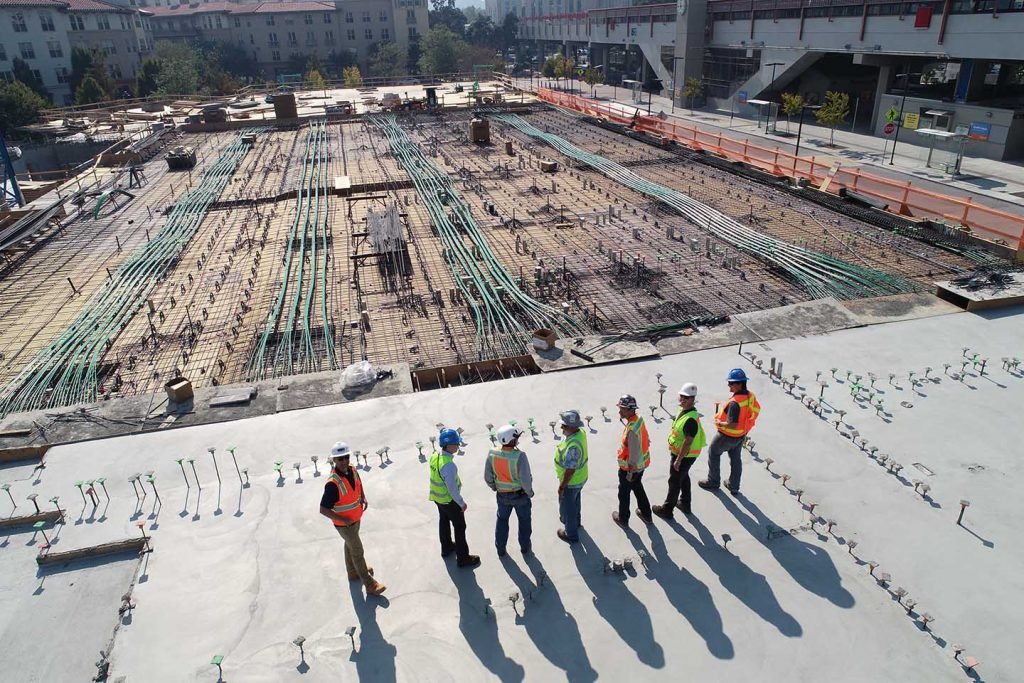
On the other hand, for years I have had the unenviable task of trying to explain elevators in simple terms. It can be done! The premise of modular elevators is that we can make high-quality commercial elevators easy to understand, purchase, set and start up. This can be hard as we are taking all the engineering of a modular tube-steel hoistway and putting all the elevator components inside the hoistway in a factory. Elevator complexity times two.
This manufacturing process must be done with the highest precision and quality assurance. The engineering must be spot on and the product must leave the facility ready to start up once up-righted at the site and the electricity is supplied. All this must be explained plainly and easily.
So, I know elevators can be made easy to understand because at MEM we have the chore of not only explaining the elevator but, the modular hoistway as well. It just seems that some in our industry gain some real pleasure in speaking over peoples heads. That arrogance leads to confusion.
Arrogance may just be the tip of the confusion iceberg however. I am convinced and so are a lot of other people in the industry that make it hard to understand intentionally. The purpose is to confuse the potential customer so selling up is easier.
Everyone that deals with old-fashioned, conventional elevators companies already knows this is at least true in part. What other motive can there be for hiding true costs? Why would they breeze over the obvious purpose of proprietary parts? What is the motivation behind the installation process being so overtly laborious and difficult to comprehend? How can the contract being filled with so many exclusions, ifs, wherefores and seemingly more fine print then a contract from Willy Wonka be explained?
One answer may lie in the words of the English philosopher and statesman who among other things developed the scientific method – Sir Francis Bacon. He is credited with saying that “Knowledge is power.” Unfortunately, there is a thought that withholding that knowledge from people will produce control and ultimately wealth. This is not a new notion.
The phrase “Knowledge is power” actually predates Bacon by centuries and contains a darker tone.
“Knowledge is power and it can command obedience. A man of knowledge during his lifetime can make people obey and follow him and he is praised and venerated after his death. Remember that knowledge is a ruler and wealth is its subject.”
Imam Ali – Nahj Al-Balagha (The Way of Eloquence) – Saying 147.5
That quote seems to be the credo of many in the elevator business. If confusion can reign and information withheld, those holding the knowledge can exploit those who don’t have it. Let me say as loudly as possible this is not necessarily a scheme or plot of an evil genius. It is an observation of human behavior. If you need an elevator, only a few have the knowledge to help and they are in control…until the advent of the modular elevator. By breaking away from the old, outmoded way producing and distributing elevators, we changed the way we talk about them as well.
So, there is an option if you have ever felt like asking the question, “Are elevators confusing on purpose?” and you are tired of confusing elevator talk. If you are not getting clear concise answers, contact us.
MEM has a dedicated force of sales representatives that are more knowledgeable than any other. We love selling elevators, but equally we love explaining them and answering questions. It is what we do; we honestly assess your needs, answer your questions and give you information in a way that will be less painful than a trip to the doctor’s office. If you have a project in mind, just click the button below to get started.

When you get over a couple of stories in a building project a man lift or construction elevator becomes a reality. Numbers bear it out even if it is a requirement based on number of stories. The need is there due to the cost of having a construction team without one tromping up and down stairs all day. Workers are simply less productive, so although the cost is often hidden in hours lost by using a staircase, it is real and real expensive.
But, then you have the added cost to your project for the temporary elevator, plus availability, the set up and inevitable delays. It seems you are either paying too much for the savings if you get one or you simply don’t have a construction elevator onsite at all because for a low or mid-rise project it seems cost prohibitive. So, here’s the question: Why use a temporary construction elevator at all when a permanent modular elevator could be used instead?
It makes perfect sense. A commercial quality, modular elevator can be placed and turned on when electricity is available at the jobsite. When construction is finished, it becomes the permanent elevator.
Now before I get started, let me say up front that this is not the perfect solution for every job. If your desired use is not a low or mid-rise project it is probably not a good fit. We are simply not the best solution for high-rises.

Also, if you are wanting to move tons of palatized materials, likewise we are not a match either. Elevators designed for passenger use usually have a capacity of between 2000lbs and 5000lbs. We, of course, can make elevators that have a huge capacity weight-wise, but the cost would outstrip the benefit once the building is opened.
In addition, passenger elevators are limited in size generally. First, you have the cab size. We can make elevators with a cab big enough for a hospital bed (the only limitation is getting elevators under the overpasses on a flatbed truck). But then you have the door issue as well. Usually, passenger elevators have door openings of 36 or 42 inches, although some can be wider. Keep in mind the door opening does not extend across the entire elevator cab. So, if you want to take items to the top floor larger than the cab or the door opening our elevator is not the best way.
There are plenty of other solutions that do not involve an elevator at all if moving big, heavy items is needed. But in most construction scenarios we are the solution or at least worthy of consideration.
I like to say that this blog is designed to be informational and not just a sales pitch. The above is exhibit A of just that. Shoehorning us into a project where it is not a solution makes no sense and damages our credibility. It also damages the credibility of the modular concept overall. We can think outside of the box, and have even made round pegs fit into square holes (see this corner post project) but, modular is not always the best solution.
However, in the majority of construction projects, at the low and mid-rise level we are the solution. This is especially true if you are looking to cut costs regarding the use of a temporary elevator during the construction phase.
In other words, if moving men, tools and some materials is needed on building site, that role could be filled by the modular elevator quite easily and at minimal additional costs.
So, when you start looking at your construction schedule and logistics think about the elevator first. This is not an earthshattering thought. It is common practice for the hoistway or hoistways to be the first item on the drawing board along with stairs. But, here’s the change… don’t think just hoistway. Think fully installed elevator.
MEM elevators are the hoistways and fully installed elevator. They are a steel shaft wrapped in drywall for fire protection with a complete elevator already inside. The elevator car, rails, wiring, doors and frames are in place when it arrives at the site. In the example video below, that is what you are seeing; a fully installed elevator being set in a building.
Most projects require about 4 hours to get the elevator craned into place.
Then the start up can begin once there is electricity at the building site. Because everything is generally already installed, it takes about a week to get the elevator running. With the inspection, and following the appropriate rules for a construction elevator the modular unit can be used during the building phase.
To make the above possible keep this in mind regarding modular elevators:
Modular elevators (especially from MEM) can help you on the jobsite as both a construction elevator and passenger elevator. It can replace the cost of a construction elevator or it can bring a construction elevator to a job where one was not considered due to cost. It maybe time to consider the benefits of a modular elevator as your construction elevator solution. Click the button below below for a Fast Track quote and to get the process started.
Never miss a blog post again. Sign up for our monthly email newletter. Get important information about elevators, the modular industry and more.
